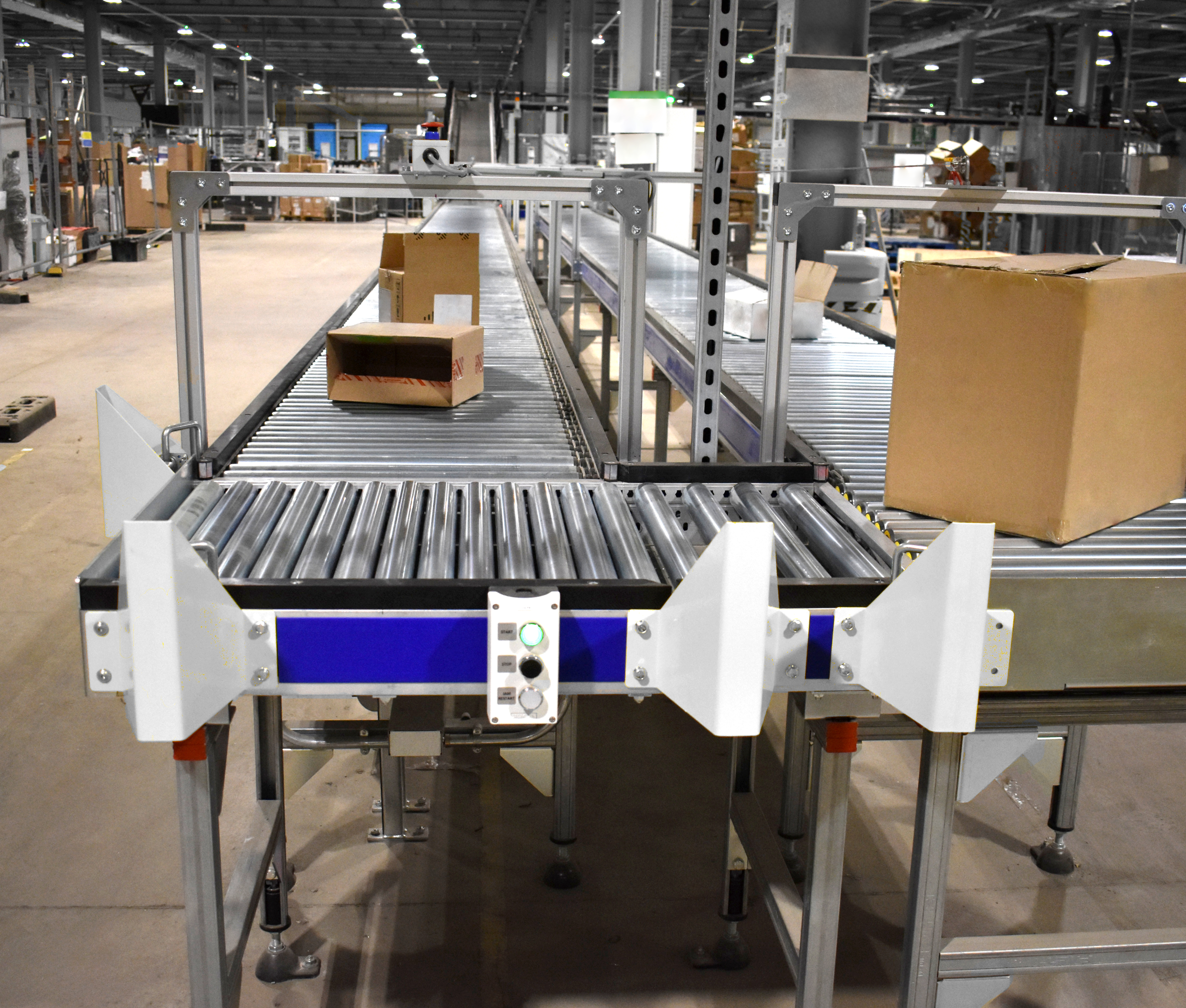Pallet conveyor systems are a critical component in many industrial operations, playing a vital role in streamlining material handling and improving overall workflow. However, like any other piece of machinery, they require regular maintenance to function optimally and avoid costly downtime. Proper care and maintenance not only prevent unexpected breakdowns but also extend the lifespan of your pallet conveyor system, ensuring that it continues to deliver high performance over the long term.
In this blog, we’ll explore essential tips and best practices for maintaining your pallet conveyor system and keeping it in top condition.
1. Regular Inspection and Monitoring
The first step in maintaining your pallet conveyor system is to schedule regular inspections. Frequent checks will help identify potential issues before they turn into major problems. When conducting inspections, pay attention to the following:
- Rollers and Bearings: Ensure that rollers move smoothly and bearings are well-lubricated.
- Belt or Chain Tension: Check the tension of the conveyor belt or chain to prevent excessive wear or slippage.
- Electrical Components: Inspect sensors, motors, and other electrical parts for any signs of wear or malfunction.
- Alignment: Verify that the conveyor is aligned correctly to avoid jams or uneven wear on the system.
2. Lubrication is Key
Proper lubrication is crucial for reducing friction and wear on moving parts such as chains, bearings, and rollers. Over time, the lack of lubrication can cause significant damage to these components, leading to higher maintenance costs or the need for replacement. Establish a regular lubrication schedule based on manufacturer recommendations, and use high-quality lubricants suited for the system’s environment.
3. Clean the System Regularly
Dirt, dust, and debris can accumulate on pallet conveyors over time, potentially leading to blockages, motor strain, or wear on parts. Cleaning the system regularly will help maintain its efficiency and reduce the risk of operational issues. Follow these cleaning practices:
- Remove Debris: Ensure that debris, such as packaging material or dust, is cleared from the conveyor’s surface and moving parts.
- Wipe Down Components: Use a damp cloth to wipe down key components and prevent the buildup of dust and dirt.
- Deep Cleaning: Periodically schedule deep cleaning of the conveyor system to address hard-to-reach areas.
4. Ensure Proper Load Management
Overloading or unevenly distributing loads on a pallet conveyor can cause stress on the system, leading to premature wear and breakdowns. Always adhere to the manufacturer's load capacity guidelines and avoid placing excessively heavy or off-center loads on the conveyor. Implementing proper load management practices will reduce wear and extend the system’s lifespan.
5. Address Wear and Tear Immediately
Even with the best maintenance practices, some level of wear and tear is inevitable. However, the key to preventing major failures is addressing wear as soon as it’s detected. Common areas that may experience wear include belts, chains, rollers, and bearings. Replace or repair worn parts before they lead to bigger issues. Ignoring these early signs can result in more costly repairs down the line or a full system shutdown.
6. Check and Adjust Conveyor Tension
The tension of your conveyor system’s belts or chains can greatly impact its performance. Belts that are too tight may cause unnecessary strain on the motors and rollers, while loose belts can result in slippage and inefficient movement. Regularly check and adjust the tension of your conveyor to maintain optimal performance and prevent damage to other components.
7. Keep Spare Parts on Hand
Having spare parts readily available can significantly reduce downtime in case of an unexpected failure. Commonly replaced parts, such as rollers, bearings, belts, and chains, should be stocked on-site. This will allow your maintenance team to quickly swap out damaged components, minimizing disruption to your operations.
8. Train Your Team
Proper operation of your pallet conveyor system starts with a well-trained team. Make sure all personnel responsible for operating and maintaining the system are trained on the following:
- How to operate the conveyor within its load and speed limits
- How to safely perform regular maintenance tasks
- How to recognize the early signs of malfunction or wear
By ensuring that your team understands best practices for handling and maintaining the system, you reduce the likelihood of accidents and equipment failure.
9. Schedule Professional Servicing
While in-house maintenance is essential, scheduling periodic professional servicing is equally important. Certified technicians can perform more in-depth checks, calibrations, and repairs that may be beyond the capabilities of your team. Professional maintenance services can also provide insights into potential future issues, allowing you to plan proactively.
10. Monitor System Performance with Technology
Implementing monitoring tools such as IoT sensors or software can help you track the real-time performance of your pallet conveyor system. These technologies can provide valuable data on system health, alert you to potential problems, and even automate maintenance schedules. Predictive maintenance technologies can further extend the lifespan of your equipment by addressing issues before they lead to significant damage.
Conclusion
A well-maintained pallet conveyor system will save your business time and money by reducing downtime, minimizing repair costs, and extending the life of the equipment. By following these maintenance practices—regular inspections, proper lubrication, cleaning, load management, and professional servicing—you can ensure that your pallet conveyor system continues to operate efficiently and reliably for years to come. Proactive care is the key to getting the most out of your investment.
With consistent attention and the right practices in place, your pallet conveyor system will continue to provide smooth, trouble-free operation, driving productivity and efficiency in your warehouse or industrial facility.






